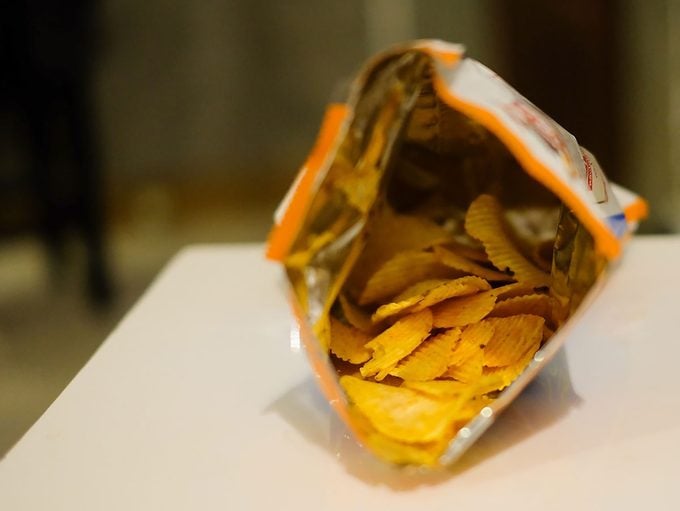The Surprising Reason Why Your Potato Chip Bag Is Half Empty
Updated: Mar. 11, 2018
Turns out, the chip companies aren't ripping you off with a half-full bag.

If you’re a junk food lover, you’ll know this: No matter where you shop or what brand you buy, when you tear open a bag of potato chips, it’s almost always half filled. This can be quite disappointing. I’d always hope for those crispy, crinkle-cut potato chip bags to be filled to the brim. But there’s actually a good reason for this—and no, the food company isn’t pulling a fast one on you.
The Reason You’re Looking at a Bag Half-Full
In the manufacturing industry, “slack fill” is empty space that’s intentionally placed around a product. The idea is that the extra room can as a buffer to protect your Lays, Ruffles or Tostitos from damage. The trip from the production facility to your office’s vending machine can be quite bumpy! If it weren’t for slack fill, your chips would probably look more like bread crumbs.
Accidentally crushed your chips? That’s OK! Use them in this yummy potato chip side dish.
But Wait, There’s More
Thought that your potato chip bag was puffed up with air? The cushion actually is nitrogen gas. Chip manufacturers fill bags with this preservative gas to help keep chips fresh. If it were filled with regular air, the chips would likely turn soggy and spoil. In 1994, scientists found that exposing chips to nitrogen not only helped to extend the shelf life, but also made them taste better! I’ll take a tasty, fresh snack over spoiled any day.
Psst! Nitrogen is a natural gas and completely harmless.
Still Feel Deceived by the Empty Bag?
There’s a way to tell how much is in your snack bag before you break it open. In 1966, Congress passed the Fair Packaging and Labeling Act, which requires manufacturers to disclose the net weight of their product’s contents to prevent fraud or deceit. When shopping for your next bag of cheese puffs, pay attention to the net weight that’s printed on the bag.This way you’ll be able to discern if you’re getting the most bang for your buck.
Better yet, learn how to make your own chips. No nitrogen necessary.